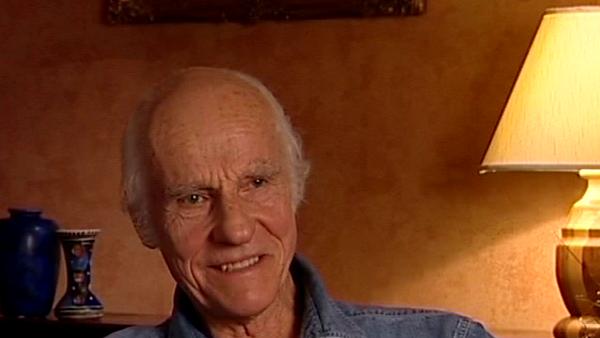NEXT STORY

Avoid being formulaic when setting out the scene
RELATED STORIES

NEXT STORY

Avoid being formulaic when setting out the scene
RELATED STORIES


|
Views | Duration | |
|---|---|---|---|
| 161. Having to shoot Agaguk in Super 35 | 39 | 01:31 | |
| 162. The appeal of Agaguk | 24 | 00:56 | |
| 163. Agaguk: Lighting inside the real igloo | 37 | 01:21 | |
| 164. Being impressed by Jean le Pin's operating technique | 45 | 01:40 | |
| 165. The role of a cinematographer | 181 | 05:47 | |
| 166. What I think makes a good director | 174 | 02:57 | |
| 167. Differing working methods with directors | 86 | 03:09 | |
| 168. Avoid being formulaic when setting out the scene | 78 | 00:54 | |
| 169. Steadicams developed by Garrett Brown | 72 | 03:16 | |
| 170. CSI and HMI lamps | 78 | 04:19 |


So I've worked with a lot of… lot of different directors from varied backgrounds and there's a great variety in how a director approaches the setting up process after you've rehearsed the scene and done the blocking. Some directors have a very clear picture in their minds of where they want to put the camera, how much coverage they need when they want close-ups; some are very clear, some do storyboards. Others are less clear and encourage one's participation so that one is sort of sharing in the process of… of what… what's going to happen with the camera and there are others who… who have said to me: ’Well, here's the action, you get the set up.’ And we'll talk about the breakdown of shots but they won't actually be closely involved in what the camera does. And I worked with one director, who had been an actress — her name was Lee Grant — and I'd worked with her on Voyage of the Damned. And she was the one who insisted on doing her own makeup and painting the white lines in. 20 years after that she asked me to photograph a film in French Canada — Montreal — which she was directing, and the leading lady was a little bit older than she should have been for the part and she invited me in to… to photograph the film. Now, it was interesting working with her because straight up she said, ‘I've got no idea about lefts and rights.’ She said, ‘I don't know how to work out the cutting of when somebody should left… look left or right, or where the camera should be, so I…’ she said, ‘I'll leave all that to you’. And there are other directors who have rehearsed the scene then turned to me and the operator and said, ’Well, how do you want to shoot it?’ So, there's a tremendous variety in the responsibility you're given, so in addition to our other functions, we also need to have an understanding of editing and how something might cut together and how things are going to match, and also giving the editor sufficient material to play with. The other thing I'm always interested in when one's shooting a scene is what… what the beginning of the scene is and the end of the scene is — what goes before and after — and I'll often confer with the script supervisor about what precedes and what follows the scene that we're doing in an effort to make a cut that will… that will flow. Or we'll make a dramatic cut, depending on what you need. But then, so often, scenes get moved around in post production and the scene might become a flashback and so all sorts of things change in the editing but at least one makes the effort to… to put things together so that they will flow and match and keep it interesting.
Billy Williams, London-born cinematographer Billy Williams gained his first two Oscar nominations for the acclaimed “Women in Love” and “On Golden Pond”. His third nomination, which was successful, was for the epic “Gandhi”. He was President of the British Society of Cinematographers, and was awarded the Camera Image Festival’s Lifetime Achievement Award in 2000.
Title: Differing working methods with directors
Listeners: Neil Binney
Neil Binney began working as a 'clapper boy' in 1946 on spin-off films from steam radio such as "Dick Barton". Between 1948-1950 he served as a Royal Air Force photographer. From 1950 he was a Technicolor assistant technician working on films such as John Ford's "Mogambo" (photographed by Freddie Young), Hitchcock's "The Man Who Knew Too Much" (Bob Burke), and Visconti's "Senso" (G.R. Aldo/B. Cracker). As a camera assistant he worked on "Mind Benders", "Billy Liar" and "This Sporting Life". Niel Binney became a camera operator in 1963 and worked with, among others, Jack Cardiff, Fred Tammes and Billy Williams. He was elected associate member of the British Society of Cinematographers in 1981 and his most recent credits include "A Fish Called Wanda" and "Fierce Creatures".
Duration: 3 minutes, 10 seconds
Date story recorded: September 2003
Date story went live: 24 January 2008